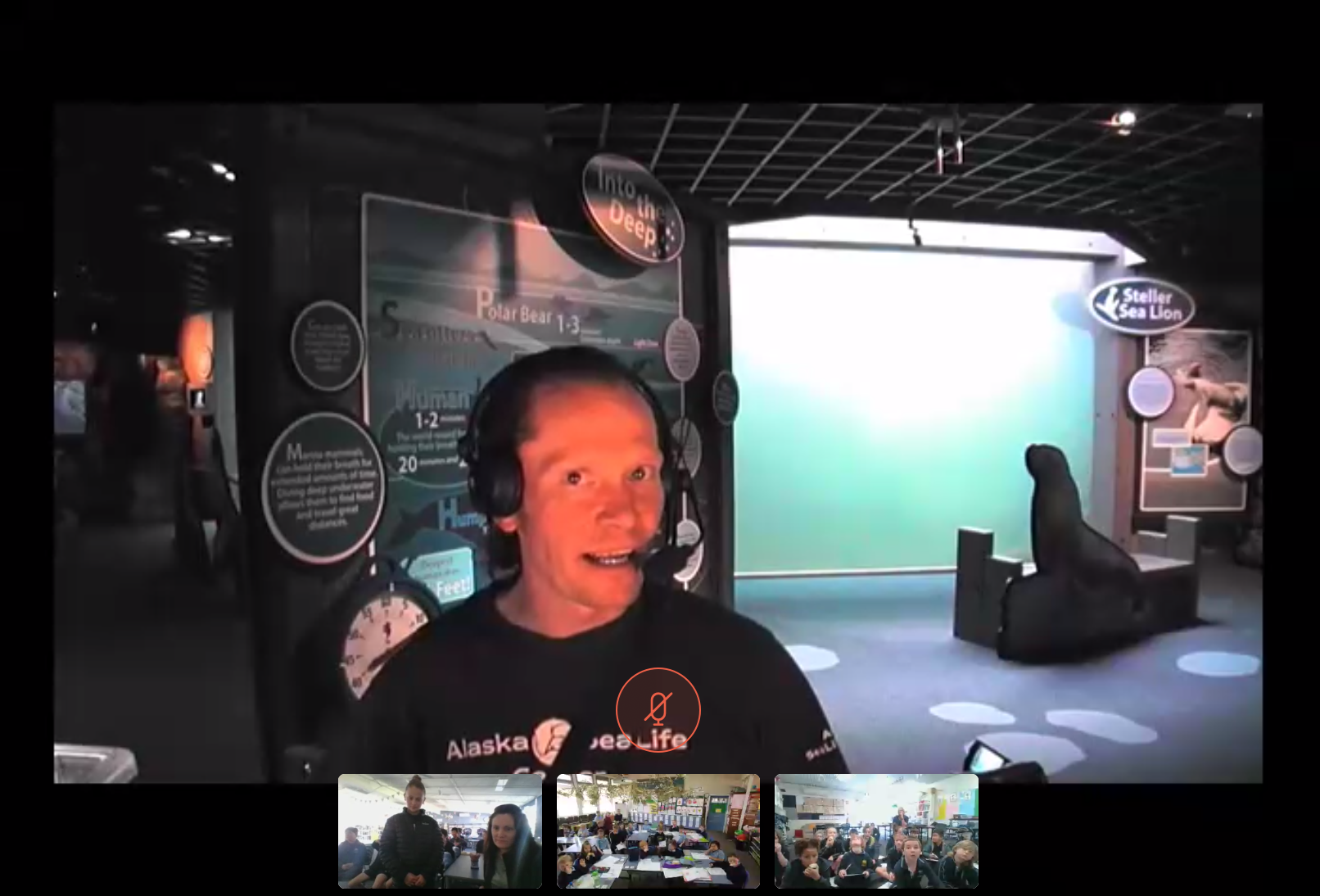
Eat or Be Eaten: Alaska Live
STEMLinc Video Conferencing: Visit Alaska… virtually! Discover the food chains that keep harbor seals and sea lions surviving in the frigid waters off Alaska. Using interactive video conferencing equipment or just a laptop & webcam, your students can expand their scientific experience via live, multi-media presentations. Using inquiry-based learning, these conferences incorporate live animals (whenever possible) and current research programs happening at the dynamic Alaska Sea-Life Center! (Image: Alaska Sea-Life Center)
NOTE: This program is by ZOOM only.
Featured Feedback: “The session was awesome. We will be doing a follow up with kids. Very interesting and well worth the while. The kids were fascinated. Thanks.” (Michael Pannam, Ormond PS)
Year Level : 3 – 6
Duration: 1 hour
STEM in a box:
A teacher guide, and a kit containing stickers and handouts will be provided for this lesson.
Background Information:
Producers are vital in every ecosystem. They are the first link in all food chains. They are living things that are able to convert non-living energy into a form of usable energy. Examples include plants in forests and tundras, algae in ocean ecosystems, and a combination of both in wetlands.
Consumers are animals that are unable to convert energy from non-living sources. For this reason they eat producers or other consumers. Primary consumers eat the producers, so they are the second link on the food chain. Consumers that eat other consumers are called secondary or tertiary consumers and are the third or fourth links in the food chain.
The food chain can be followed from link to link. However, the actual exchange of energy in an ecosystem is not so simple. Many animals eat multiple producers or consumers. For this reason it is necessary to show the relationships in a food web, with many interconnected food chains.
Prior Knowledge: No prior knowledge is necessary.
Learning Intentions:
In this program students will:
- Learn how energy is transferred from non-living sources to animals in a food chain and food web
- Learn to complete a food chain and identify the roles of animals in the food chain
- Explore the adaptations of Alaskan animals and how these adaptations are important to their survival
Activities:
In this program students will:
- Participate in an interactive live webinar with an Alaskan presenter and be able to see Alaskan sea life creatures such as seals and sea lions
- Complete a food web diagram using the stickers provided
Victorian Curriculum:
Years 3 – 4
Science – Biological Sciences
- Living things can be grouped on the basis of observable features and can be distinguished from non-living things(VCSSU057)
Levels 5 – 6
Science – Biological Sciences
- Living things have structural features and adaptations that help them to survive in their environment (VCSSU074)
IMPORTANT: Cancellation Policy
- When you book you will receive an automated message from Eventbrite. Save this carefully please.
- Any cancellations need to be received in time for STEMLinc to re-sell your tickets to other teachers.
- Please use the Eventbrite confirmation email to facilitate any cancellation of your booking. That will automatically release your ticket for re-sale on our system.
| Date and Time | Ticket available | Booking link |
|---|
| Term | Lesson Date/time | Click to book (Note 1 ticket = a class of 25 students) |
| 3 | September 6th 10am | Book here |
| 4 | November 7th 10am | Book here |
